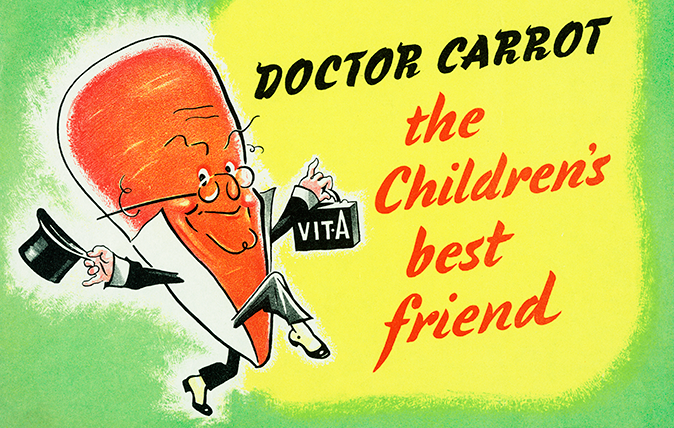Victory in the Kitchen: How the carrot helped Britain win the Second World War
Britain's ingenuity in the wartime extended to the kitchen, and there's no better example of this than the humble carrot.


The Second World War had a huge impact on how millions of British people cooked and ate. Food was ‘a munition of war’, a vital fuel to keep the population going.
With imports hit hard by the attacks on shipping convoys, compromises were made to get Britain as far as possible towards self-sufficiency. Food was never wasted; alternate ingredients were constantly tried out.
“This is a food war," said Lord Woolton, the wartime Minister of Food.
"Every extra row of vegetables in allotments saves shipping. The battle on the kitchen front cannot be won without help from the kitchen garden. Isn’t an hour in the garden better than an hour in the queue?”
The humble carrot is the perfect example of that. It was used widely a sweetener as well as a vegetable staple, and was promoted for its health benefits – leading to the 'Doctor Carrot' character you see at the top of this page.
Those benefits, incidentally, do not include better eyesight at night – though that myth emanated from the war as well, with British intelligence spreading the rumour that Vitamin A helped pilots' vision at night. It was a propaganda triumph, believed to have been introduced in 1940 to explain British pilots' superiority over the Luftwaffe during night missions. The real reason, of course, was the development of radar – a secret which the British wanted to keep for as long as possible.
Carrots appear in many ingenious guises in a new book called Victory at the Kitchen, published by the Imperial War Museum at £6.99. Victory in the Kitchen is not your usual cookbook: there are no beautiful photographs of food carefully prepared in studios, but instead a collection of simple, delightful and – to our modern palates – unusual recipes from the Second World War. It's all beautifully illustrated with some of the museum's collection of beautiful and often very funny wartime posters.
Exquisite houses, the beauty of Nature, and how to get the most from your life, straight to your inbox.
Last week we picked out two wartime pie recipes. Today, we've picked out two recipes that are heavily based on carrots – things that your mothers, grandmothers or great-grandmothers might well have made in the war.
Carrot Croquets
With sugar being rationed, the Ministry for Food encouraged the use of carrots as sweeteners. For a slightly sweeter take on the traditional potato croquet, try this carrot alternative.
Ingredients
- 12 oz finely grated carrot, raw
- 6 oz finely grated potato, raw
- 4 oz grated cheese
- 1½ teaspoons salt
- Pepper
- ½ teaspoon dry mustard
- 3 oz oatmeal
Method
Mix the finely grated vegetables and cheese. Season, add the oatmeal to form a fairly stiff mixture. Form into croquettes and fry in hot fat.
Chocolate and carrot pudding
The name might put you off, but is it really any stranger than carrot cake? Of course not, and the success of sweet carrot recipes in the war shows why. Carrots were used in everything from jam sponges to marmalade (dubbed 'Carrolade').
Ingredients
- 2 cups flour
- 1 cup grated carrot
- 1 oz sugar
- 2 tablespoons golden syrup
- 1 teaspoon bicarbonate soda
- 1 teaspoon baking powder
- 1 heaped tablespoon cocoa
- ¼ pint milk
- 2 oz margarine
- A little vanilla essence
- Salt
Method
Cream the margarine and sugar together and stir in the grated carrot, syrup, fruit and the rest of the dry ingredients. Add milk to mix to a fairly stiff consistency. Put into a greased basin and steam for 2 hours.
Country Life is unlike any other magazine: the only glossy weekly on the newsstand and the only magazine that has been guest-edited by His Majesty The King not once, but twice. It is a celebration of modern rural life and all its diverse joys and pleasures — that was first published in Queen Victoria's Diamond Jubilee year. Our eclectic mixture of witty and informative content — from the most up-to-date property news and commentary and a coveted glimpse inside some of the UK's best houses and gardens, to gardening, the arts and interior design, written by experts in their field — still cannot be found in print or online, anywhere else.
